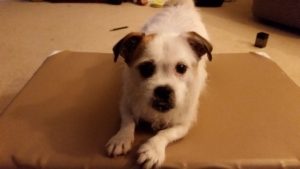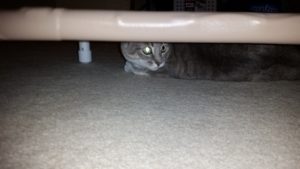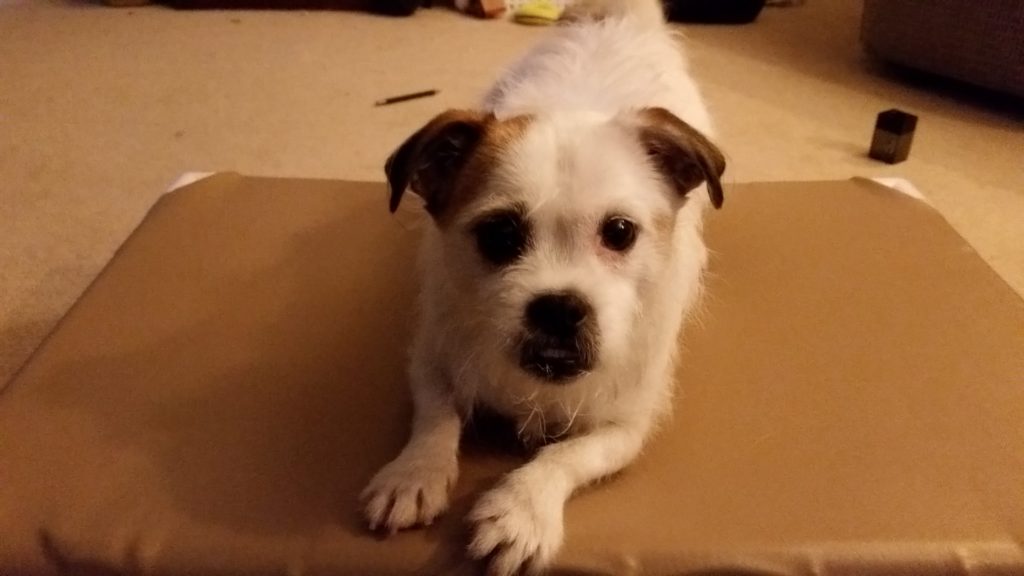
This original project was found at PVC Fittings Online but we modified it a bit to better fix the size of dogs we have. Here Esther models how well it fits her.
The original size was 23″ by 32″ we reduced that a bit to 17″ by 26″, for a finished size of 20″ by 30″. Here’s our adventure of building a dog bed below.
If you have questions or would like to donate some beds or supplies, please contact us.
Estimated Cost per bed approx ~$30.00
Supplies (PVC from Lowes & Fabric from JoAnns):
- 2 – 5 ft 1″ pvc pipe = $5.92
(or if you can fit it in your car, a solid 10 ft pipe is cheaper = $3.48) - 4 – side outlet elbows = $9.92
- Box of Screws (100 = $4.97 – we used about 25 per bed)
- 1 yard Fabric (makes 2 beds) – $19.99, with coupon $15.99 (Use a 20% coupon to get this a bit cheaper)
Note: We used Marine Vinyl as suggested by the original post, but next time I think we’d go with some of the cheaper upholstery fabric so it’s less stretchy. - Optional Items:
- 4 Leg Caps = $2.92
- 1 yard of fleece to go over the vinyl as a warm cover
Tools:
- Drill – Must have a drill the PVC was surprising difficult to drill into.
- PVC Cutter – you can use a regular saw or a pvc cutter
- Hammer or mallet to pound the pvc together, or you can just use your muscles 🙂
Instructions:
- First we need to cut up the PVC pipe. We will need two 17″ pieces (sides), two 26″ pieces (sides) and four 4″ pieces (legs). If you did the 5 ft sections cut the first piece into two 17″ pieces and a 26″ inch piece and the second pipe cut into one 26″ piece and four 4″ pieces.
- Once the pieces are cute you should be ready to go. Here’s my supplies. I added some elastic too in case I wanted to create a stretch over fleece cover for the bed.
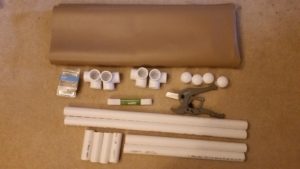
- Connect all your pvc together into a base and add the legs. An important note is that you DO NOT want to hammer or mallet or strongly push the PVC together until AFTER you have attached the fabric. You will be twisting two of the sides so at least two need be loose enough to be able to twist. Esther is here too supervising.
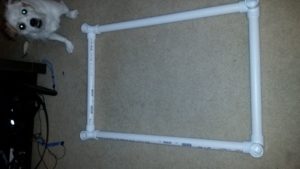
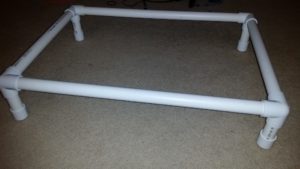
- Now flip the frame over on top of the underside of the fabric. The legs of the frame will be sticking up in the air. Starting on the log side fold under both corners.
Cass is now in charge of supervising the project. Here he is being VERY helpful.
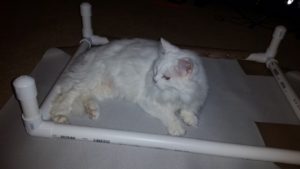
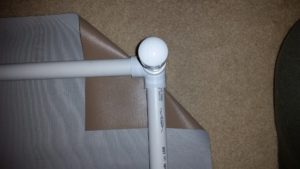
- I started with the longer side first. Next fold over the lip of the fabric so it’s extra thick before we screw it to the PVC pipe. I had about 3/4″ overlap. The original instructions called for fabric glue to keep the flap down, but I apparently didn’t read carefully enough so I used paperclips.
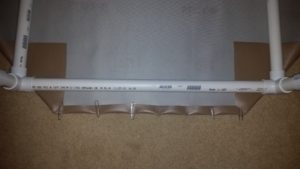
- Next fold up the two layers edge and drill a screw into the base to hold the fabric in place. DO NOT screw into the fitting, only screw into the PVC Pipe itself. Don’t worry to much about tension yet. We’ll fix that in the next few steps. I spaced my screws about 2″ on the start and then 3″ apart across the rest of the edge.
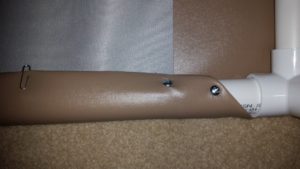
- After you’ve done the long side, switch to the opposite side and repeat. You and pull the fabric a bit, but don’t worry yet about tightness, just get the screws in the right place along the edge. Again be mindful NOT to screw into the fittings yet.
- Now you’ve got two sides done and likely kind of floppy fabric in the middle of them. This won’t work well as when the dog gets into the bed, they’ll end up on the floor so lets tighten those up. You’ll want to find the side with the lesser fabric (or maybe you’re better than my first attempt and got your bed more centered then I did, then you can just pick one.). For me I had one side where the fabric wrapped almost all the way around the bar and the other side was only about half way around.
- Now that you have the lesser side identified, swing the bed back around and work on locking in the longer side. You’ll want to hammer or push in the PVC connectors into the side now so the pipe no longer turns and is very sturdy but ONLY on the longer side. Next we’re going to take a screw and screw through the fitting into the pipe. This will prohibit the pipe from disconnecting from the legs and also make it easier to tighten. Place screws in both ends of the long side.
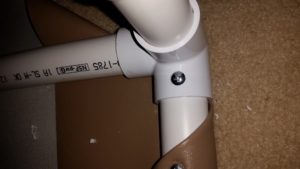
- Now switch back around and with all your might twist the bar so that the fabric tightens. This is probably easier with two people, but I did manage it solo. It doesn’t have to be perfect, just get it as tight as you can (and you’ve also got your workout for the day too!). Then hammer in the ends and add screws to that side. Now we’ve got two sides done, hammered together and screwed tight.
- You’ll repeat the same for the other two sides. Secure the fabric, rotate frame, secure the fabric, see which side is longer, hammer the longer side’s connectors in, secure the longer side via the fittings, rotate frame, twist side until the fabric is tight, hammer in the ends, and secure via the fittings.
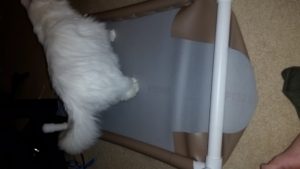
- TADA – Flip it all over and you’ve got an awesome new dog bed (or cat cave depending on who you ask).
